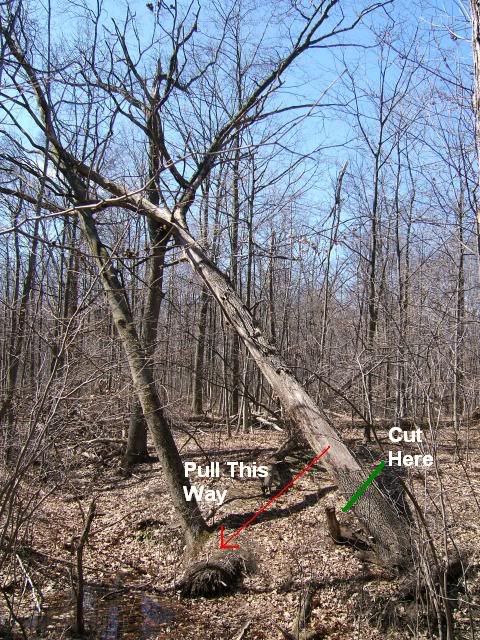Any suggestions on how best to get the tree that is missing bark safely down on the ground? It is located in a nature preserve and a walking trail runs right beneath it. I was planning on leaving it and letting it fall on its own, but this past weekend I saw some kids trying to set up a rope swing on it, so it should probably be removed before it becomes more of a liability than it already is.
I have no way to get log pulling power equipment to this site, but if I can wait until our June workday I can get a group of a dozen or so guys on a rope to pull on the tree. My planned cut, pull plan is shown on the picture. I think this is probably the best way to do it, but I would welcome other suggestions.
Though the picture doesn't really show it, the tree is roughly 24" diameter up until it branches out.

I have no way to get log pulling power equipment to this site, but if I can wait until our June workday I can get a group of a dozen or so guys on a rope to pull on the tree. My planned cut, pull plan is shown on the picture. I think this is probably the best way to do it, but I would welcome other suggestions.
Though the picture doesn't really show it, the tree is roughly 24" diameter up until it branches out.






